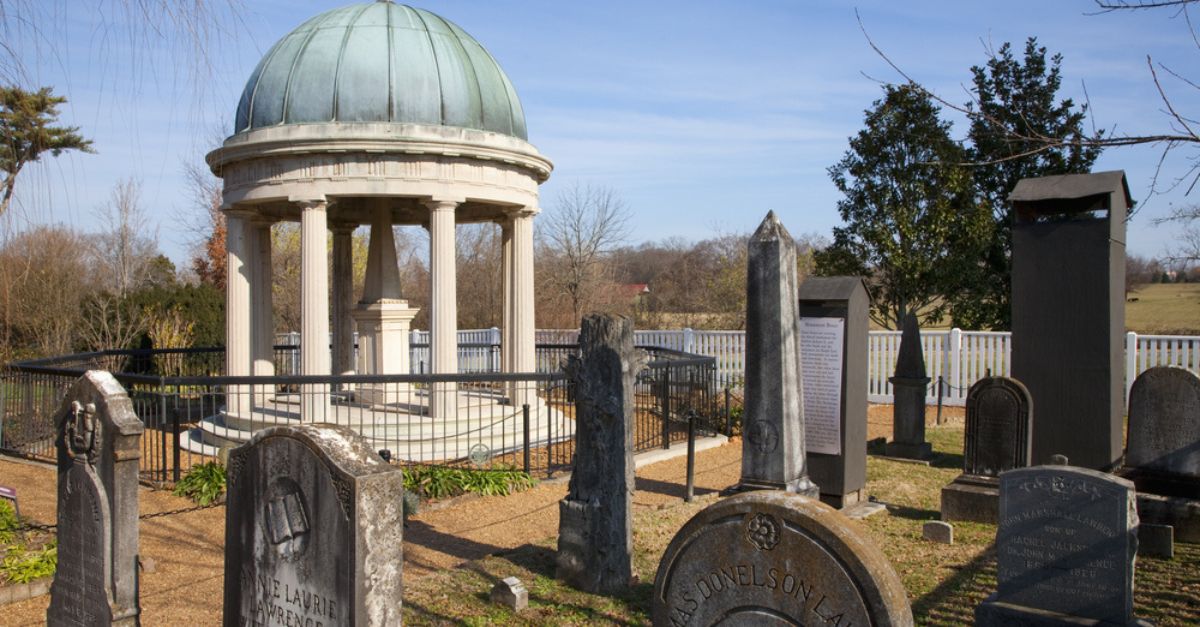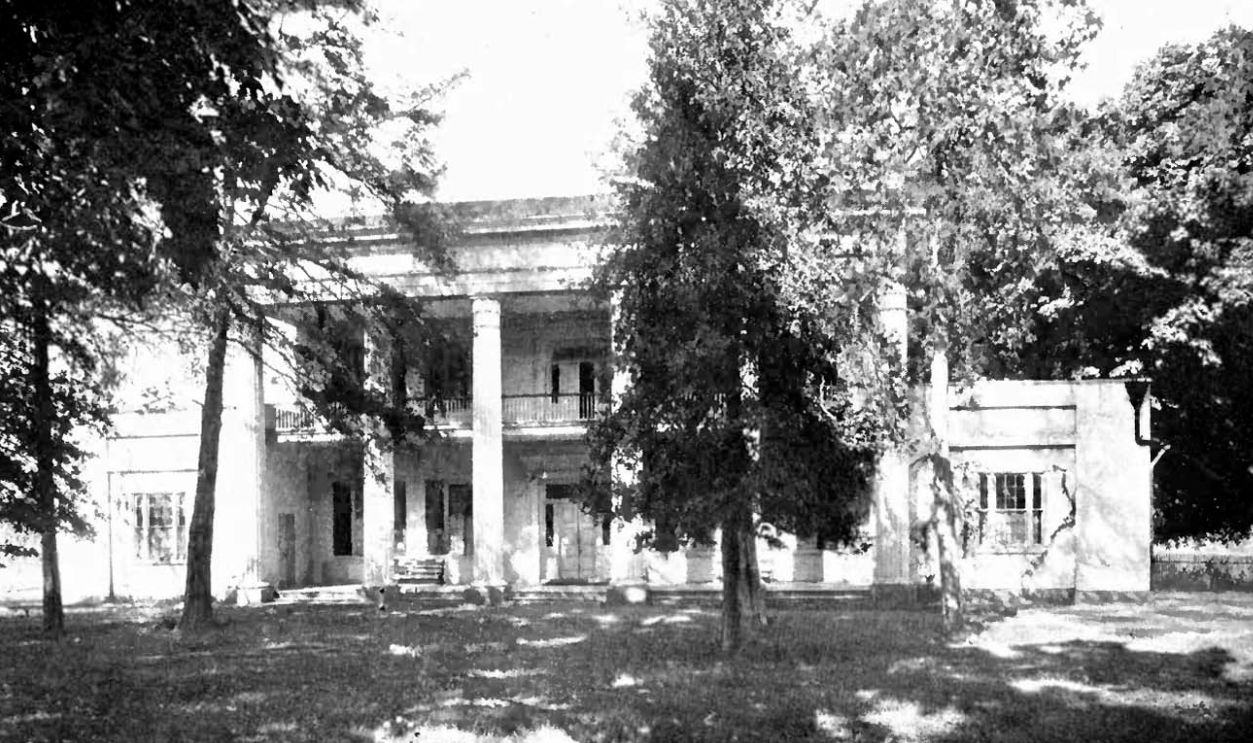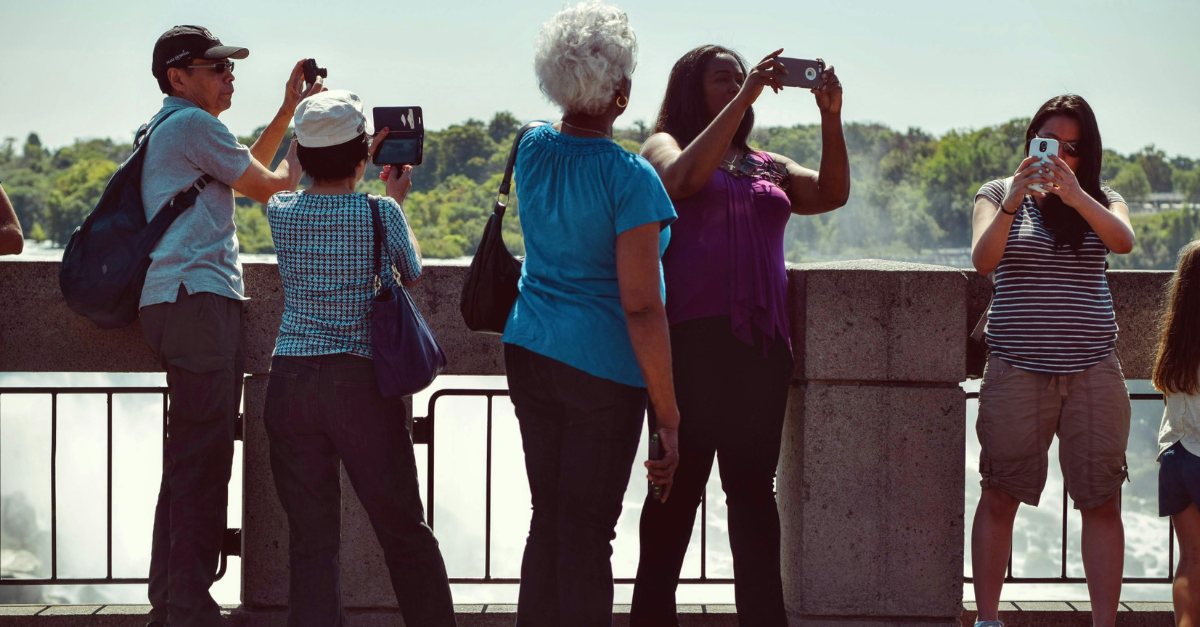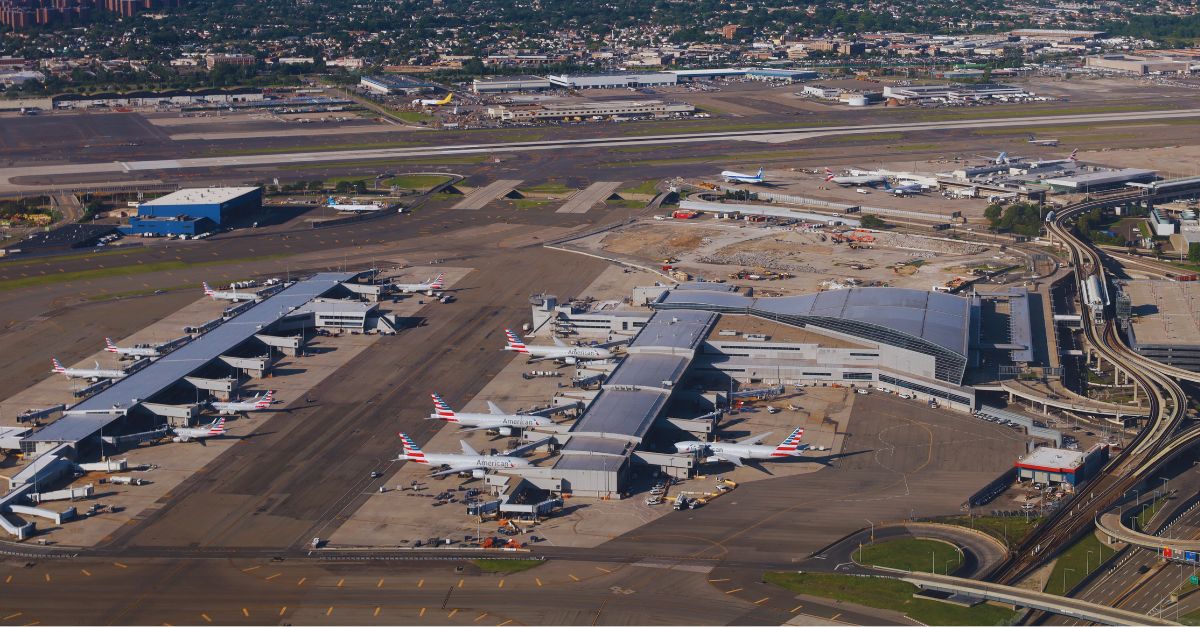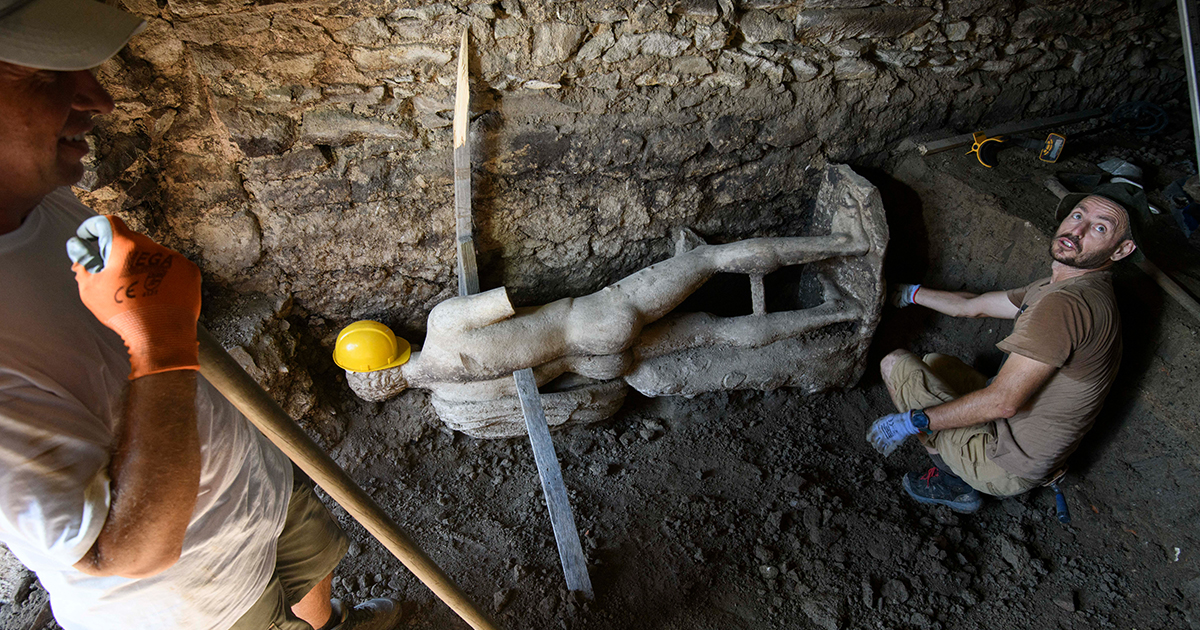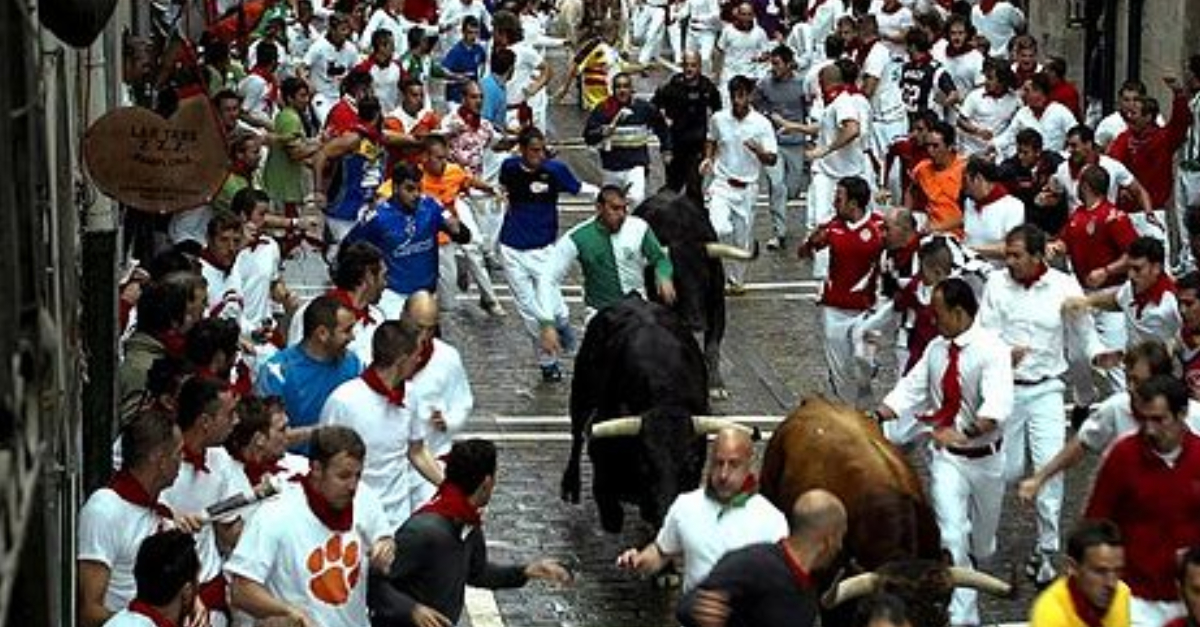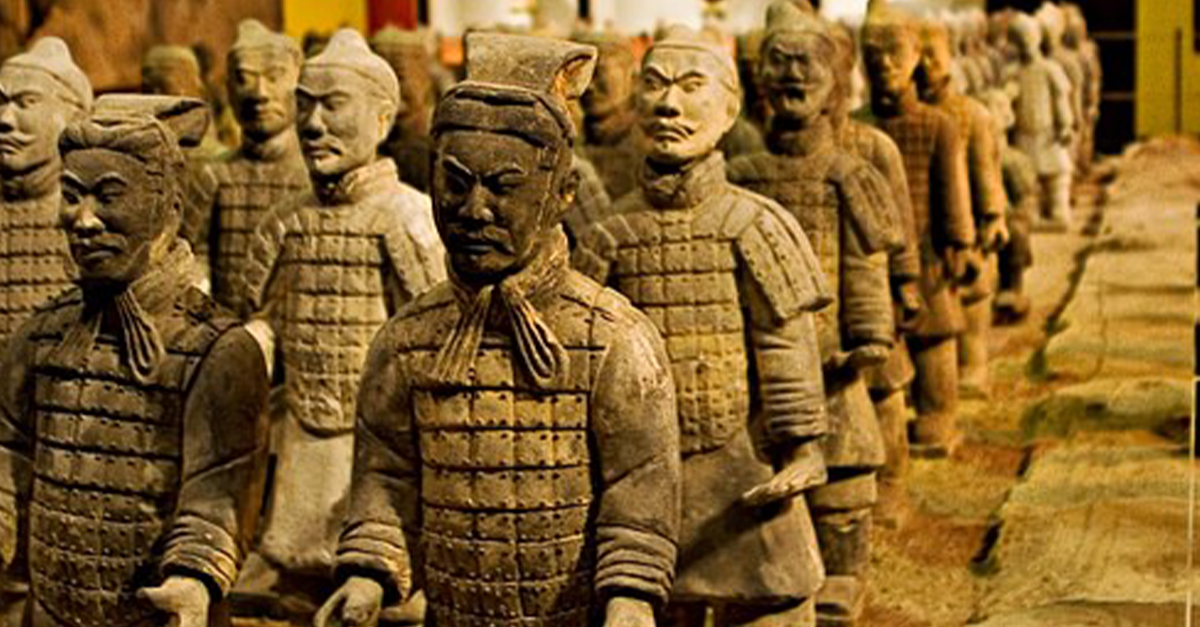What Jackson's Plantation Reveals About The Past
At The Hermitage, Andrew Jackson's plantation, the earth has just revealed a story long buried—literally. A recent discovery of enslaved worker's gravesites on Jackson's sprawling estate sheds new light on the history we often overlook.
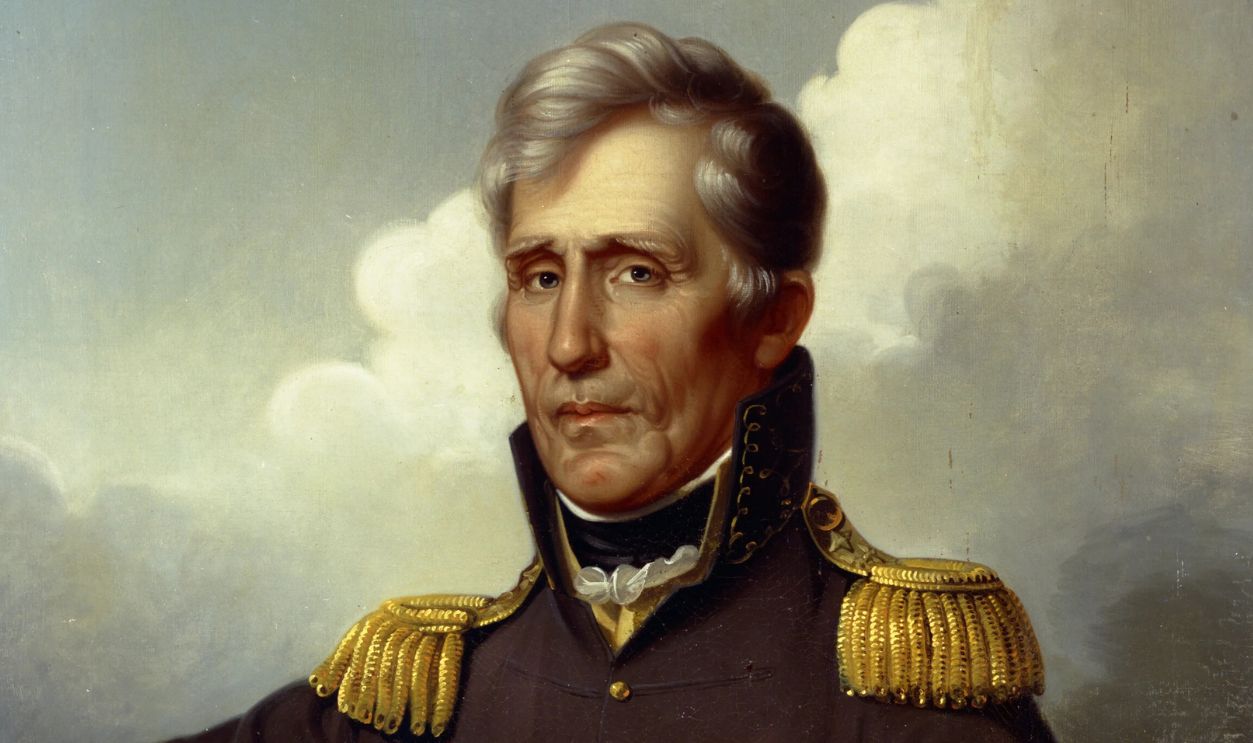
A Controversial Legacy
Andrew Jackson, the seventh president of the United States, was a polarizing figure in American history. Born in 1767 to poor immigrant parents, Jackson rose from humble beginnings to become a military hero, most famously for his victory in the Battle of New Orleans during the War of 1812.
 Thomas Sully, Wikimedia Commons
Thomas Sully, Wikimedia Commons
Old Hickory
His popular policies and advocacy for the common man earned him the title of "Old Hickory," but his presidency also left a legacy of deeply controversial actions. Jackson's role in implementing the Indian Removal Act involved forceful relocation of thousands of Native Americans.
 Benjamin A. Gifford, Wikimedia Commons
Benjamin A. Gifford, Wikimedia Commons
It Didn't Stop There
Jackson's opinions about slavery were unapologetically in line with the institution's deeply embedded role in Southern society. As a wealthy plantation owner, he owned hundreds of enslaved people and relied on their labor to run his estate and produce cotton.
 Unknown Author, Wikimedia Commons
Unknown Author, Wikimedia Commons
The Hermitage
The seventh American president purchased The Hermitage, located just outside of Nashville, Tennessee, in 1804, expanding it into a large cotton-producing estate. By the time he became president in 1829, The Hermitage had become a symbol of his wealth and power, which directly fueled his political career.
 Nashpaul, CC BY-SA 3.0, Wikimedia Commons
Nashpaul, CC BY-SA 3.0, Wikimedia Commons
It Kept Growing
Over the years, Jackson grew his estate significantly, adding to its land and the enslaved labor force. His ownership of The Hermitage was marked by his reliance on slavery as the backbone of economic success. At the time of his death in 1845, Jackson's plantation was a sprawling estate.
 Antony-22, CC BY-SA 4.0, Wikimedia Commons
Antony-22, CC BY-SA 4.0, Wikimedia Commons
With More Enslaved Workforce
Some reports mentioned that Jackson bought his slaves from Colonel William Hebb in the Washington area. By the end of his life, Andrew Jackson owned approximately 150 enslaved people, though the total number of people he domineered over his lifetime is believed to be higher.
 Getty Center, Wikimedia Commons
Getty Center, Wikimedia Commons
These People Added To The Hermitage Plantation
When Jackson acquired The Hermitage in 1804, it was a modest 425-acre property. However, his enslaved force played a major role in turning this estate into one of the most significant estates in Tennessee. His increasing social and political power ultimately led to his presidency in 1829.
 Everett Collection, Shutterstock
Everett Collection, Shutterstock
The Hermitage's Growth To 1,000 Acres
By the time of his death in 1845, The Hermitage had grown to a vast 1,000 acres. The 1,000-acre estate included not only fields for cotton and other crops but also numerous structures, including the mansion, stables, and living quarters for both Jackson's family and his enslaved workers.
Ownership Of Over 500 Enslaved People
Throughout his life, Andrew Jackson owned more than 500 enslaved people, the majority of whom were forced to work on The Hermitage plantation, according to its official website. While the exact number varied over time, Jackson's extensive use of enslaved labor was a key factor in his wealth and success.
 Everett Collection, Shutterstock
Everett Collection, Shutterstock
They Pushed Him Forward
Enslaved people at The Hermitage did agricultural work in the fields and domestic labor within the mansion. Jackson's ownership of enslaved people began in the late 18th century, and by the time of his presidency, he had significantly increased the number.
 Everett Collection, Shutterstock
Everett Collection, Shutterstock
He Couldn't Have Done It Without Them
The lives of these enslaved people were harsh and marked by long hours with little to no personal freedom. Jackson's ownership of The Hermitage is a reflection of the larger economic system in the South, where wealth was often built on the backs of enslaved laborers.
 Everett Collection, Shutterstock
Everett Collection, Shutterstock
They Lived An Unfair Life
These men, women, and children worked on various parts of the plantation, including in the fields, the mansion, and on construction projects around The Hermitage. Unfortunately, many stories survived, showing that he followed brutal tactics while dealing with these workers who did nothing wrong.
 Everett Collection, Shutterstock
Everett Collection, Shutterstock
Horror Stories Can Be Told
Jackson's views on slavery were consistent with the economic and social norms of the time in the South. Many reported that he ordered harsh and even brutal punishments against them. Terrible stories would be passed on to show his unreasonable brutality.
 Golfpecks256, Wikimedia Commons
Golfpecks256, Wikimedia Commons
He Treated Them Inhumanely
In one incident recounted by The White House Historical Association, an African American slave called Betty was accused of what was called "improper behavior." Jackson stated that she must be ruled with the cowhide and given fifty lashes the next time she disobeyed orders.
 Memorializing the 300 enslaved people owned by Andrew Jackson by NewsChannel 5
Memorializing the 300 enslaved people owned by Andrew Jackson by NewsChannel 5
She Wasn't The Only One
One of Jackson's slaves ran away to escape his miserable circumstances. The US president published an ad in the Tennessee Gazette, with a reward promised to whoever would bring him back. He added a special bonus for anyone who would give him 100 lashes.
 Andrew Jackson, Wikimedia Commons
Andrew Jackson, Wikimedia Commons
Recent Discovery Of Enslaved People's Graves
These horrible stories align with the horrifying news of January 2024. The Andrew Jackson Foundation announced the discovery of a mysterious gravesite that could contain the remains of enslaved people who worked on Jackson's plantation, The Hermitage. No one knows why they died, but they certainly didn't have the best lives.
 Graves of 28 enslaved people found on Andrew Jackson's Middle Tennessee property by WBIR Channel 10
Graves of 28 enslaved people found on Andrew Jackson's Middle Tennessee property by WBIR Channel 10
The Neglected Lives
This finding marks an important step in uncovering a history that has long been neglected. Despite extensive research into Jackson's life and his estate, the physical remains of the enslaved people who contributed to his success have not been identified until now.
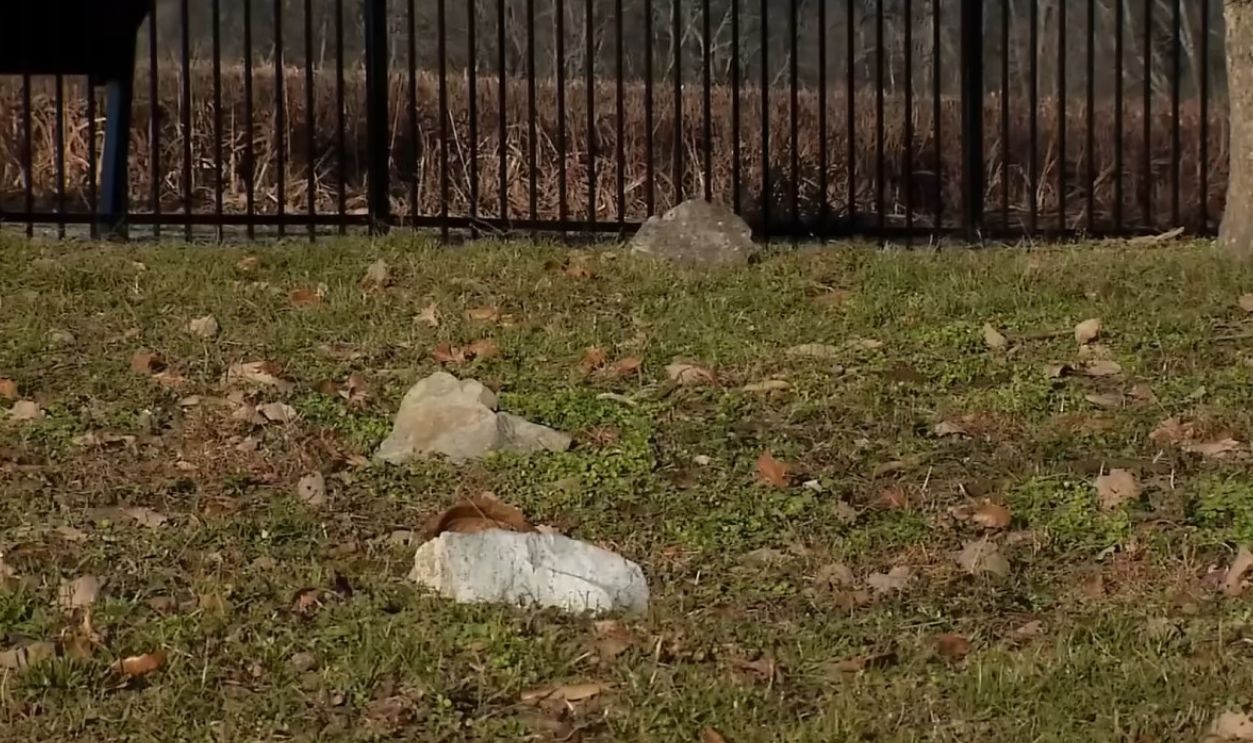 Graves of 28 enslaved people found on Andrew Jackson's Middle Tennessee property by WBIR Channel 10
Graves of 28 enslaved people found on Andrew Jackson's Middle Tennessee property by WBIR Channel 10
Reading The Ground
The unmarked graves at The Hermitage were identified through physical features such as soil depressions and the presence of limestone, commonly used as grave markers during the 19th century. These markers, simple and unadorned, reflected the lack of recognition and dignity afforded to them in life.
 Graves of 28 enslaved people found on Andrew Jackson's Middle Tennessee property by WBIR Channel 10
Graves of 28 enslaved people found on Andrew Jackson's Middle Tennessee property by WBIR Channel 10
It All Started With An Agricultural Report
Things started with a 1935 agricultural report that referenced graves and trees on the property. This historical document provided an important clue that guided archaeologists to the site. Thanks to historical records, we can learn more about the hidden and ignored aspects of history.
 Memorializing the 300 enslaved people owned by Andrew Jackson by NewsChannel 5
Memorializing the 300 enslaved people owned by Andrew Jackson by NewsChannel 5
Technology Played A Significant Role
Most of the surviving descendants of these people probably don't know that their ancestors' resting place is located at The Hermitage, right next to the man who deprived them of their rights. The graves were discovered using advances in archaeological technology, including ground-penetrating radar.
 Why Is His SLAVE Buried Next To President ANDREW JACKSON At The Hermitage? By The Graveyard Channel
Why Is His SLAVE Buried Next To President ANDREW JACKSON At The Hermitage? By The Graveyard Channel
The Hermitage Foundation's Announcement
The announcement of the discovery of these gravesites was made by the Andrew Jackson Foundation, which oversees the operation of The Hermitage today. This foundation aims to preserve and interpret Jackson's legacy while educating the public about the complex and painful history of The Hermitage.
There Were Some Conflicts
For years, there were requests for transparency regarding Jackson's ownership of enslaved people and the broader history of slavery in America. To preserve this newfound history, the foundation is working with historians, archaeologists, and descendants of enslaved people to ensure the respectful and accurate portrayal of this discovery.
 Everett Collection, Shutterstock
Everett Collection, Shutterstock
28 Gravesites
Discovering 28 gravesites is significant for several reasons. It offers tangible evidence of the lives of enslaved people who were previously invisible in the historical record and helps to fill in a gap in the understanding of life at The Hermitage.
 28 enslaved graves discovered at Andrew Jackson's Hermitage by NewsChannel 5
28 enslaved graves discovered at Andrew Jackson's Hermitage by NewsChannel 5
A Special Location
The graves are located near a creek and were untouched by farming or infrastructure for nearly 180 years. This discovery is especially important because it challenges the way Jackson's legacy has been traditionally viewed by forcing a confrontation with the realities of slavery that built the prosperity of his estate.
 28 enslaved graves discovered at Andrew Jackson's Hermitage by NewsChannel 5
28 enslaved graves discovered at Andrew Jackson's Hermitage by NewsChannel 5
This Is Why The Discovery Is Important
Many historians believe that the recent discovery provides tangible evidence of the lives and deaths of individuals who were previously invisible in the historical record. While experts have long known that Jackson relied on enslaved labor, the physical remains of these people were not identified until now.
 Everett Collection, Shutterstock
Everett Collection, Shutterstock
Archaeologists' Cautious Approach To Excavation
Rather than disturbing the graves, experts opted to leave the sites undisturbed out of respect for the individuals buried there. This cautious approach reflects a broader trend in modern archaeology, which prioritizes the preservation of historical sites and respects the dignity of those who lived and died under oppressive conditions.
 28 enslaved graves discovered at Andrew Jackson's Hermitage by NewsChannel 5
28 enslaved graves discovered at Andrew Jackson's Hermitage by NewsChannel 5
Enslaved People At The White House
When Andrew Jackson assumed the presidency in 1829, he brought 14 enslaved individuals from The Hermitage to work in the White House. These enslaved men and women were tasked with a variety of roles and reflected the deep entrenchment of slavery in even the nation's highest office.
 Robert Cruickshank, Wikimedia Commons
Robert Cruickshank, Wikimedia Commons
A Big Contradiction
Although things were shifting in the society, with more voices calling for the freeing of slaves, the lives of these individuals prove that the calls weren't well-heard. The transfer of enslaved laborers to Washington, DC, exemplifies how the institution of slavery was woven into the fabric of American governance.
 Unknown Author, Wikimedia Commons
Unknown Author, Wikimedia Commons
New Enslaved People
Most of the slaves brought into the White House were purchased. Historians like William Seale reported that over the course of his presidency, Jackson increased the number of enslaved workers and decreased the number of free men working as helpers, probably to save money.
 Everett Collection, Shutterstock
Everett Collection, Shutterstock
Labor On Improvements
The White House Labor Force made life easier for the inhabitants. For example, they helped install running water—a notable technological advancement at the time. Despite performing arduous and skilled work to make such upgrades possible, their contributions went unacknowledged in their lifetimes, and they were never appreciated.
 Unknown Author, Wikimedia Commons
Unknown Author, Wikimedia Commons
Domestic Labor And Horse Racing Jockeys
In addition to their work on household improvements, the enslaved individuals brought to the White House by Jackson served in roles such as cooks, housekeepers, and stable hands. Jackson's passion for horse racing meant that some enslaved men were trained as jockeys to compete on his behalf.
 Charles Hunt, Wikimedia Commons
Charles Hunt, Wikimedia Commons
It Wasn't Always Safe
These individuals bore the dual burdens of physical labor and the risks associated with high-stakes horse racing, all without compensation or recognition. Their involvement in such activities demonstrates the many ways enslaved people were exploited for the personal and economic benefit of their enslavers, even in leisure pursuits.
 Henri de Toulouse-Lautrec, Wikimedia Commons
Henri de Toulouse-Lautrec, Wikimedia Commons
But They Were Quite Close
Some reports show that these enslaved people were often close to the American president. For example, The Papers of Andrew Jackson Volume VII talks about George, who slept next to his bed as his manservant. He was the son of the enslaved cook, Hannah.
 Ralph Eleaser Whiteside Earl, Wikimedia Commons
Ralph Eleaser Whiteside Earl, Wikimedia Commons
Others Were Separated From Their Families
Old documents also show that these enslaved people had absolutely no choice. It talks of Charles, who was Jackson's manservant during his campaigns. When he became president, Charles was separated from his wife and children, who were forced to stay at The Hermitage.
 Everett Collection, Shutterstock
Everett Collection, Shutterstock
With No Regard To Their Feelings
As a matter of fact, Jackson wrote two letters to Robert Johnstone Chester to sell Charles' wife, Charlotte, in 1830, according to The White House Historical Association. Charlotte, however, appeared in the plantation's records till the 1850s. Nevertheless, this correspondence shows how Jackson thought of these enslaved people as property.
 Mathew Benjamin Brady, Wikimedia Commons
Mathew Benjamin Brady, Wikimedia Commons
The Hermitage's New Role As A Historic Site
Today, The Hermitage stands as a preserved historic site managed by the Andrew Jackson Foundation, as it offers visitors a glimpse into the life and legacy of the seventh president. While it celebrates Jackson's role in American history, the site also acknowledges the darker aspects of his legacy.
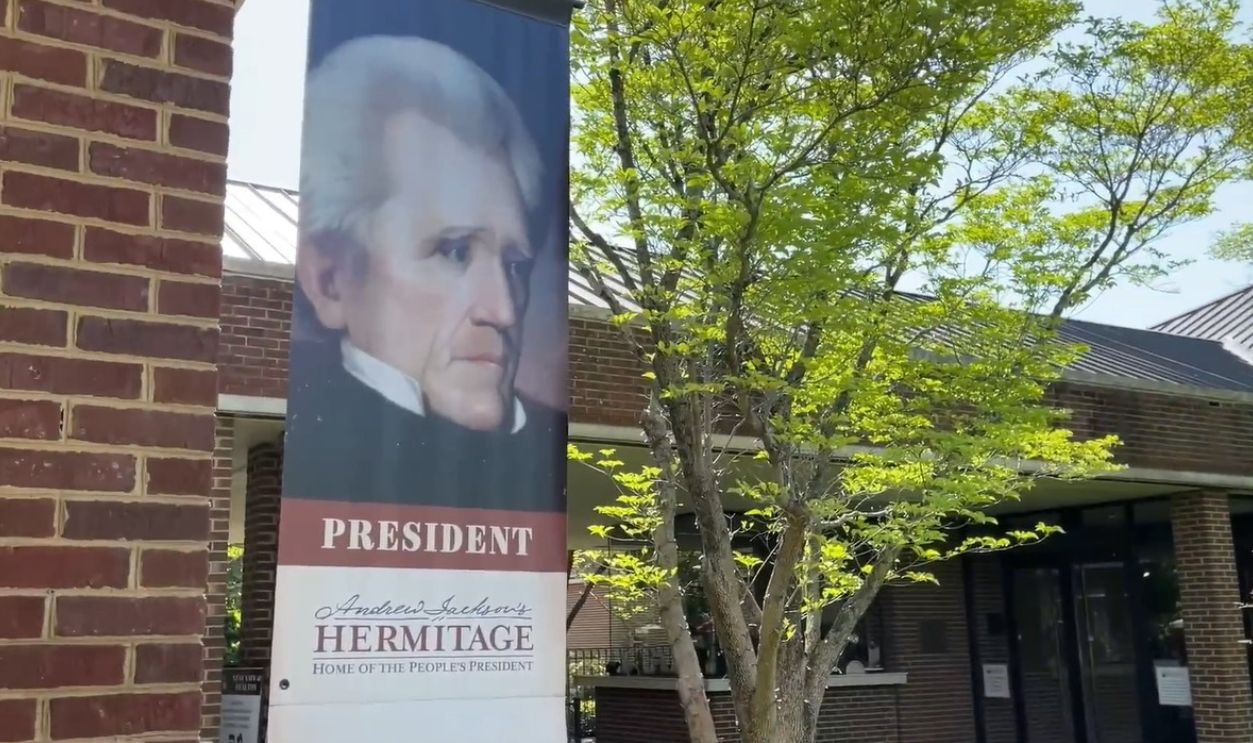 Why Is His SLAVE Buried Next To President ANDREW JACKSON At The Hermitage? By The Graveyard Channel
Why Is His SLAVE Buried Next To President ANDREW JACKSON At The Hermitage? By The Graveyard Channel
An Honest Perspective
Recent discoveries, such as the graves of enslaved individuals, have become central to The Hermitage's mission to educate people about its full history. By including these narratives, the site aims to honor those who lived and labored there to ensure their stories are not lost to time.
Similar Discoveries At Other Presidential Mansions
The Hermitage is not alone in revealing the burial sites of enslaved individuals; similar discoveries have been made at Monticello, Mount Vernon, and Montpelier—homes of American presidents Thomas Jefferson, George Washington, and James Madison. These findings show the truth about the reliance of early American leaders on enslaved labor.
 Slave Memorial Commemoration by George Washington's Mount Vernon
Slave Memorial Commemoration by George Washington's Mount Vernon
Fencing Off The Newly Discovered Gravesite
Following the discovery at The Hermitage, the area was carefully fenced off to ensure its preservation and to prevent any unintentional damage. This protective measure shows how the Andrew Jackson Foundation is committed to respecting the sanctity of the site as it shields the area from potential harm.
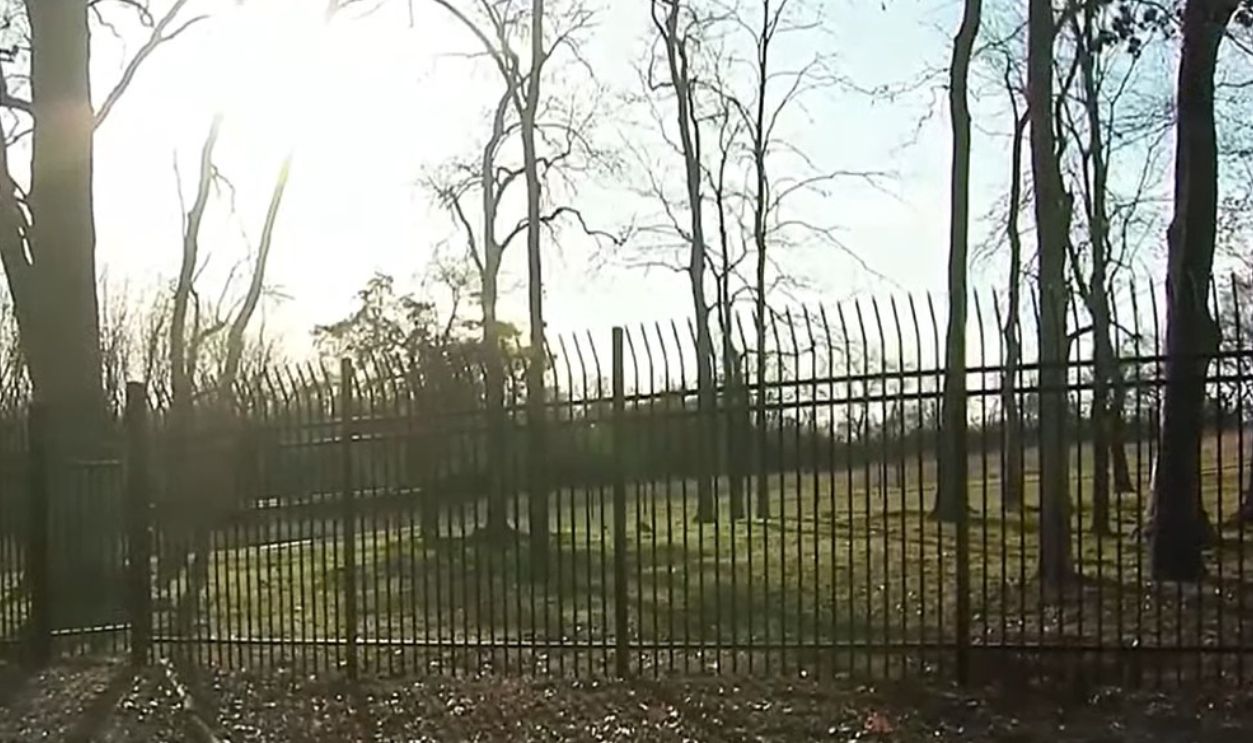 Cemetery for enslaved people discovered on The Hermitage property by WSMV 4 Nashville
Cemetery for enslaved people discovered on The Hermitage property by WSMV 4 Nashville
The Hermitage's New Free Tour Featuring The Gravesite
This newly discovered gravesite has been incorporated into a free tour designed to educate visitors about the plantation's history and the lives of the enslaved individuals who worked there. This addition provides a deeper, more comprehensive narrative and challenges visitors to reflect on the plantation's legacy of slavery.
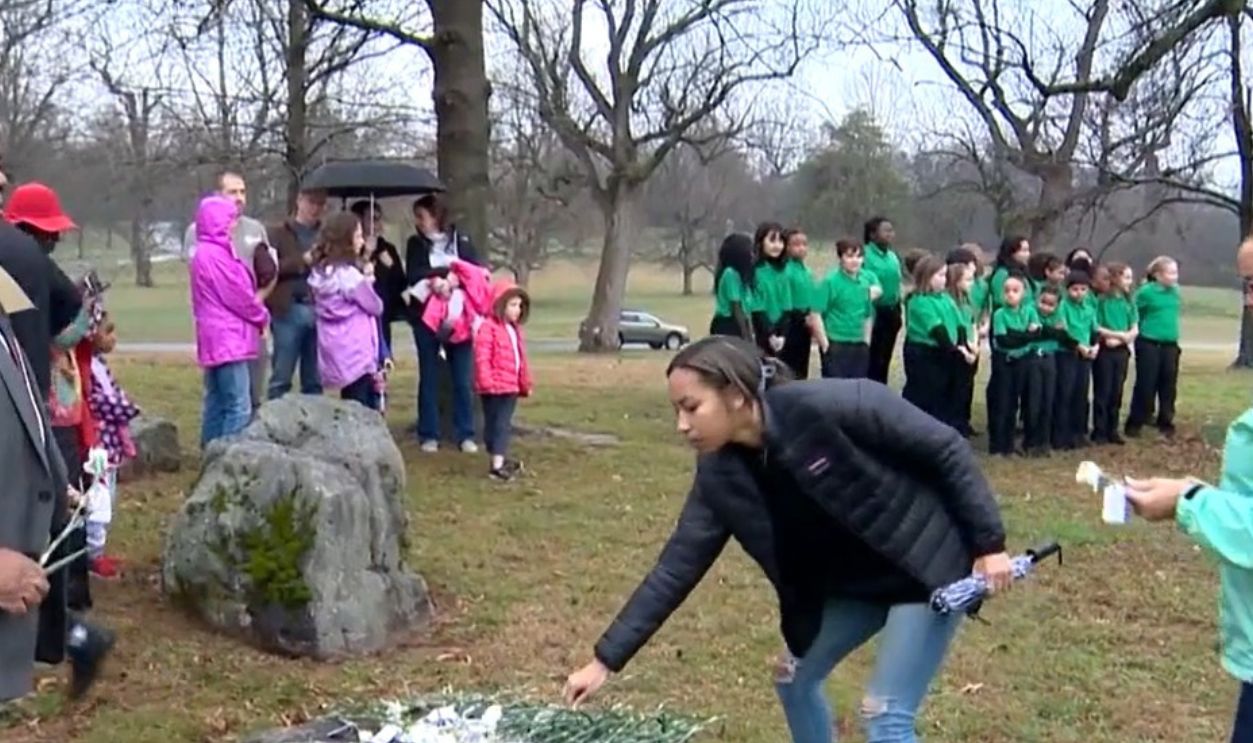 Memorializing the 300 enslaved people owned by Andrew Jackson by NewsChannel 5
Memorializing the 300 enslaved people owned by Andrew Jackson by NewsChannel 5
Advisory Committee To Determine Memorialization Plans
To guide the respectful treatment and memorialization of the gravesite, The Hermitage has established an advisory committee. This committee includes historians and descendants of the people who lived and worked there to create an inclusive and accurate representation of the site's history.
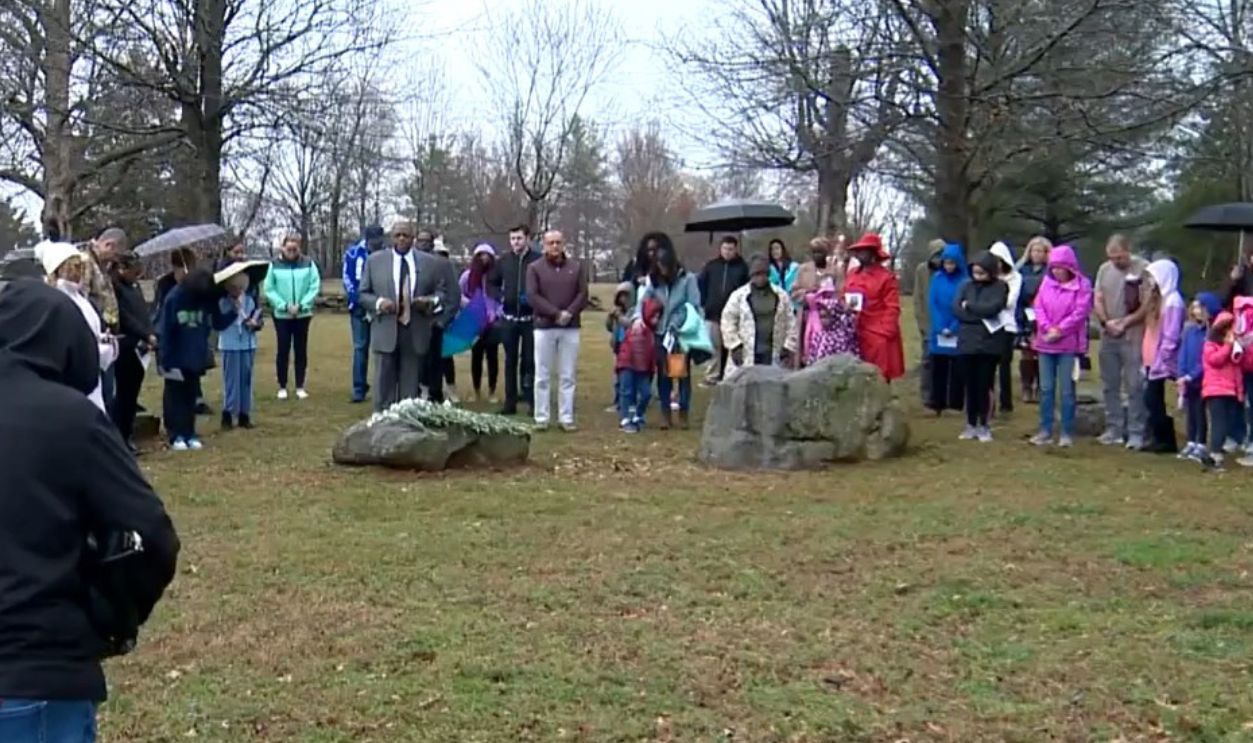 Memorializing the 300 enslaved people owned by Andrew Jackson by NewsChannel 5
Memorializing the 300 enslaved people owned by Andrew Jackson by NewsChannel 5
Their Input Matters
The voices of these people play an essential role in shaping how the newly discovered gravesite is preserved. Their insights ensure that the narrative surrounding the site is authentic and sensitive to the experiences of the enslaved individuals buried there to bridge the gap between historical scholarship and personal legacy.
 Cemetery for enslaved people discovered on The Hermitage property by WSMV 4 Nashville
Cemetery for enslaved people discovered on The Hermitage property by WSMV 4 Nashville
Jason R. Zajac's Statement
Jason R. Zajac, the president and CEO of the Andrew Jackson Foundation, emphasized the historical significance of the discovery. In his statement, Zajac acknowledged the decades of effort that led to locating the cemetery to recognize the lives of those who were enslaved at The Hermitage.
 Cemetery for enslaved people discovered on The Hermitage property by WSMV 4 Nashville
Cemetery for enslaved people discovered on The Hermitage property by WSMV 4 Nashville
Is That All?
The Andrew Jackson Foundation has been careful not to finalize the exact number of graves found at The Hermitage cemetery. While preliminary investigations suggest the presence of at least 28 graves, the foundation acknowledges the possibility that some of the identified sites may not contain human remains.
 Inside Andrew Jackson's Hermitage by Bobblehead George
Inside Andrew Jackson's Hermitage by Bobblehead George
More Secrets Might Be Revealed
Such a discovery may only scratch the surface of the historical record. The foundation and archaeologists recognize that more graves could exist in the area, hidden beneath years of natural overgrowth and undisturbed soil. Ground-penetrating radar and careful excavation have uncovered some sites, but the potential for additional discoveries remains.
 Graves of 28 enslaved people found on Andrew Jackson's Middle Tennessee property by WBIR Channel 10
Graves of 28 enslaved people found on Andrew Jackson's Middle Tennessee property by WBIR Channel 10

